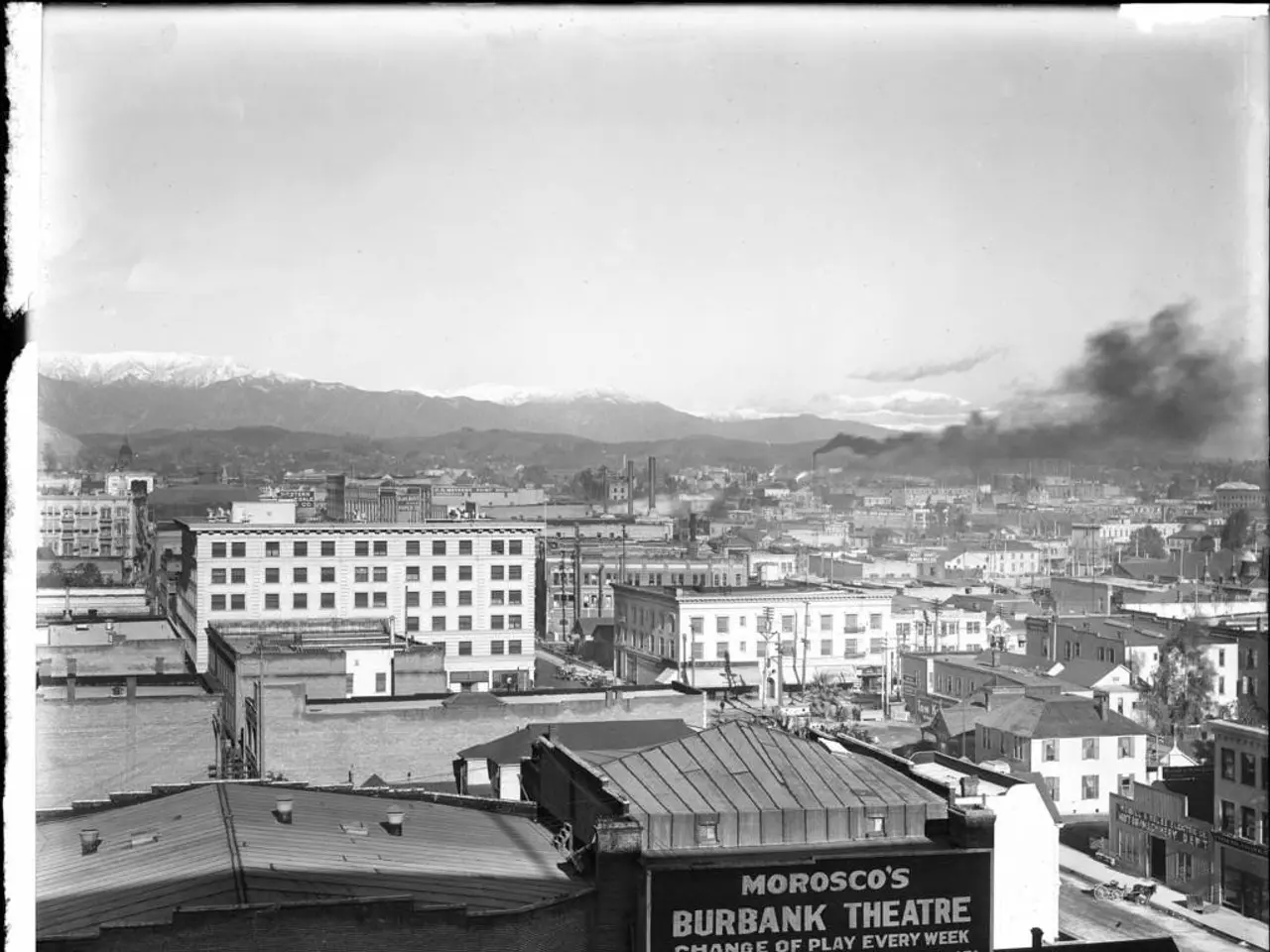Workplace accidents due to carbon monoxide exposure
News Article: Protecting Your Home from Carbon Monoxide Poisoning
In a recent incident, a carbon monoxide (CO) leak was discovered in a residential property, prompting the need for heightened awareness about the dangerous gas and how to protect against it.
Identifying and Preventing CO Leaks
To safeguard your home from CO leaks, it's essential to install CO detectors on every floor, particularly near sleeping areas. These devices, equipped with sensitive electrochemical sensors, alert you before CO reaches harmful levels.
Place detectors in or near bedrooms and hallways, about 5 feet above the floor or at eye level on walls, to ensure the alarm can wake occupants if CO levels rise at night. Avoid placing detectors too close to fuel-burning appliances to prevent false alarms, and keep them away from bathrooms, kitchens, near windows, vents, direct sunlight, or heat sources.
Regularly test detectors monthly, replace batteries annually, and replace the device every 5–10 years.
Maintaining Heating Systems
Regular servicing of heating systems, including furnaces, water heaters, fireplaces, and other fuel-burning appliances, is crucial. Annual inspections by a qualified technician can help identify potential issues before they become dangerous.
Watch for signs such as soot or brownish-yellow stains around appliance openings, yellow or irregular burner flames, frequent pilot light extinguishings, excessive condensation on windows near appliances, stale, heavy, or stuffy air in rooms with appliances, smoke or soot drifting back into living spaces, and unusual noises from heating equipment.
Ensure proper ventilation and that the chimney/flue creates an upward draft with no blockages to prevent CO from accumulating indoors.
Recognizing CO Poisoning
Symptoms of CO poisoning include headache, dizziness, nausea, vomiting, fatigue, difficulty breathing, confusion, and loss of consciousness. These symptoms can mimic flu but without fever and can worsen with continued exposure.
Emergency Response
If the CO detector alarms or you suspect CO poisoning, immediately leave your home and go to fresh air. Call emergency services or your gas company from outside, and do not re-enter until the source is fixed and it is declared safe.
Staying Safe
By installing CO detectors correctly, maintaining heating appliances, recognizing physical signs, and knowing poisoning symptoms and emergency steps, you can protect your home and family from carbon monoxide poisoning.
The fire department recommends installing CO warning detectors and regularly servicing heating systems to help prevent gas leaks. Remember, carbon monoxide is neither visible nor has a smell, so vigilance is key to staying safe. In case of an emergency, dial 112 for immediate assistance.
[1] CO Detector Buying Guide [2] Preventing Carbon Monoxide Poisoning [3] Carbon Monoxide Poisoning: Symptoms and Causes [4] CO Detector Maintenance
Read also:
- Exploring the Strength of Minimally Digestible Diets: A Roadmap to Gastrointestinal Healing
- Secondhand Smoke: Understanding its Nature, Impact on Health, and Additional Facts
- Could a Secret Heart Rhythm Device Infection Be Causing Your Illness?
- Child Water-shift Ailment Identification and Treatment: Recognizing Symptoms and Steps to Take





